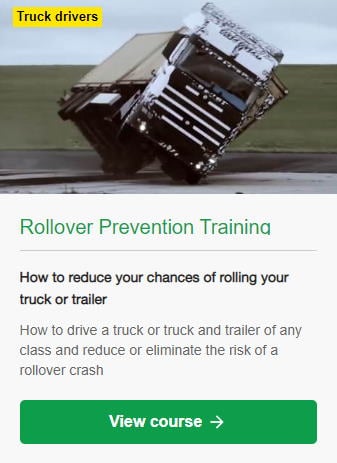Truck and trailer rollovers are caused by combinations of:
- Too much speed into a corner
- Changing direction too quickly
- Turning too quickly
- Collapse of a bank
- Strong winds
- Tyre failure
- Live loads or insecure loads shifting
- Loads loaded with the centre of gravity too high
- Braking heavily while turning
- Tripping on an object (e.g. kerb)
- Impact with another vehicle
They can happen even at slow speeds. While we saw a drop in rollover crashes during covid lockdowns, they have bounced back up again. 2022’s tally is provisional to 18 April 2022, which means the final figure, which won’t be available for several months, could be as high as 460, and that is just reported rollovers. Some estimates put total rollover crashes (including light vehicles and trailers, farm vehicles, etc) at 2000 per year.
| Year | Fatal crashes | Serious injury crashes | Minor injury crashes | Non-injury crashes | Total |
| 2018 | 9 | 21 | 82 | 25 | 136 |
| 2019 | 9 | 21 | 66 | 85 | 181 |
| 2020 | 3 | 14 | 52 | 75 | 144 |
| 2021 | 8 | 13 | 76 | 90 | 187 |
| 2022* | 3 | 18 | 69 | 52 | 142 |
| Total | 32 | 87 | 345 | 326 | 790 |
The above data is limited to trucks, HPMV trucks and 50Max trucks that were reported on a public road.
Rollovers can be prevented in the following ways:
- Driver training and awareness (so that cornering speed and lines are optimised)
- Loader training and awareness (so that loads are not unbalanced, insecure or with the centre of gravity too high)
- Using rollover prevention technology where available
- Ensuring that the truck’s tyres and suspension are in good condition and at the correct pressure
- Avoiding driving in high winds
- Taking care when parking on the side of the road (so that soft verges don’t collapse)
The impact of rollover crashes can be:
- Injury or death to the truck occupants
- Damage to public property, e.g. fences
- Collision with other vehicles resulting in injury or death
- Loss of or damage to the vehicle’s load
- Downtime leading to lost productivity and lost income while the vehicle is repaired
- Loss of insurance excess, and possible increase in insurance premiums
- Fines against or prosecution of the driver
- Investigation by WorkSafe or police which could extend to the whole fleet
- Liability by the officers of the company if the truck was found to be defective.

